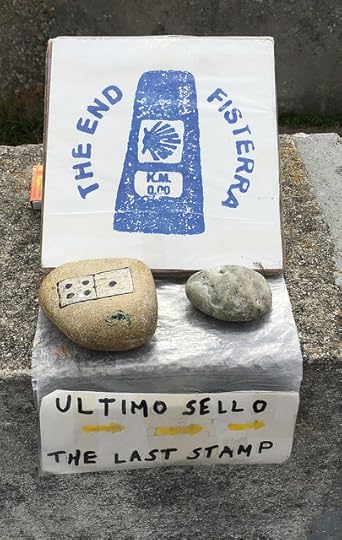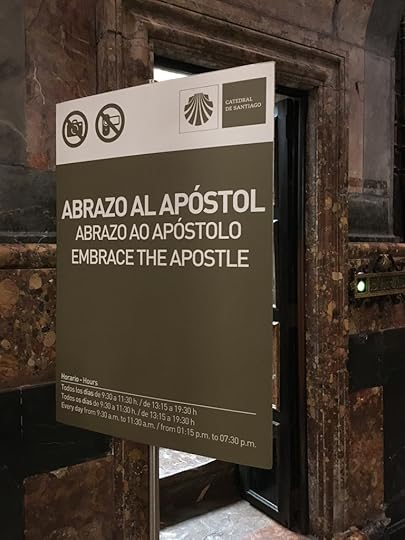Harold Davis's Blog, page 87
May 13, 2018
Atlantic Coast of Galicia
The Atlantic coast of Galicia is rugged. Sheer cliffs reach down to the ocean at the end of long peninsulas. Skies are often gray, and waves can be large. No wonder this was called the “Coast of Death” (Costa da Morte)—although nowadays the moniker is used primarily to sell souvenirs. No wonder that the end of land here where the ocean meets the sky seemed to pilgrims the end of the known world.
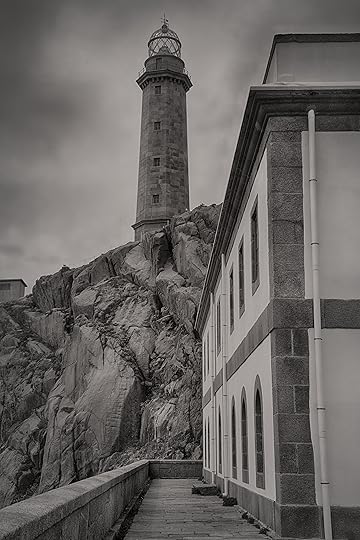
Faro de Cabo Villano © Harold Davis
Click here for the first story about my Camino to Santiago de Compostela.

May 12, 2018
Echoes of the Past
At La Mola, the immense fortress that guarded the entrance to the strategic port of Mahon, or Mao in modern rendering, on Menorca, it is easy to feel echoes of the past.

Fortress La Mola © Harold Davis
As the temperate island wind buzzes over the solitude of fields of flowers, this stone edifice reminds one that Menorca was strategic in the battle for domination of the Mediterranean between France and Spain on one side, and England on the other. The island, its deep inlet harbor at Port Mahon, and its impregnable fortifications were handed over to Spain in 1783 by the British in the Treaty of Paris.
It’s easy to image Captain Aubrey and his essential friend Maturin looking down from the heights on the HMS Surprise in harbor at Port Mahon, as in Master and Commander, the first book in the inimitable naval series by Patrick O’Brian, not knowing this would soon be enemy territory.
Of course, it is possible to forget about history, and just fool around, as in the “selfie” below.

Selfie with Grandees © Harold Davis

May 10, 2018
Shadows of Color
This is an image of the color shadows cast by the late afternoon sun shining though stained glass in the Royal Chapel of the Hostal dos Reis Catolicos in Santiago de Compostela. You can see the texture of the wall that the shadows are projected on, and even a crack in the plaster.

Shadows of Color © Harold Davis

I Hugged an Apostle
As I wandered about the interior of the Cathedral of Santiago de Compostela, I noticed a sign saying “Embrace the Apostle.” There was a line of people waiting behind a rope barrier in single file beneath the sign. So I added myself to the back of the queue.
We inched forward, finally reaching the place where you went in to the Apostle’s area. By the way, in terms of Apostles, we are talking about none other than Saint James a/k/a “Santiago”, the first of the apostles to be martyred. His remains seem to have turned up in this area sometime in the ninth century, with the tale of how they got here shrouded in myth, legend, and the slaying of dragons (I kid you not).
There was a stoplight contraption, and when it went green the person at the head of the line went up a short and narrow flight of stairs.
When it was my turn, I went up the stairs, then stood on a small stone step, and following the example of the person ahead of me, put my arm around a wooden paint-and-gilt bust of St James. Unlike the person ahead of me, I didn’t kiss the statue (memories of a certain Isak Dinesen short story came back to me, with the thought that one might catch a disease, otherwise I might just have kissed the old wooden cheek).
So I hugged an apostle! Another first for a memorable Camino…not quite in the same transgressive league as the Katy Perry song, but still something.

May 9, 2018
Waiting for Escher
The previous images of the triple-spiral staircase were from below looking up, or from above looking down. This one is neither up nor down, it is in about the middle of the stair. I am looking forward to getting this imagery into Photoshop Transform compositing, and really doing some twisted stuff (so to speak!).
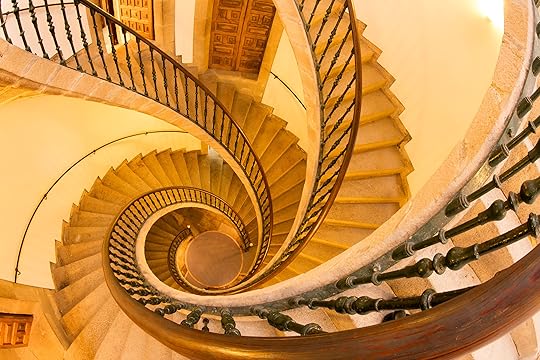
Waiting for Escher © Harold Davis
Today I rented a car, and went exploring the capes around Fisterra. The spelling is different in Galician, Spanish, Latin, and English, to name a few languages. But however you spell it, it was the end of land to the ancients, and marks an “add-on” pilgrimage beyond Santiago de Compostela. It’s a very beautiful area with a rugged coast; images and a story will follow in the due fullness of time.

May 8, 2018
Triple-Spiral Stair
The Vatican has its famous and grand two-spiral Bramante stair, and there are other examples of double-spiral stairs throughout the world; for example, Calling Alice (San Francisco) and Edificio Cuervo Rubio (Havana, Cuba) are images I’ve made based on two-spiral staircases. But as far as I know, Santiago de Compostela boasts the only three-spiral staircase. At least the only one I have ever seen or heard of. Please let me know if there are others I’ve missed.

Triple-Spiral Stairs (Looking Up) © Harold Davis
The image above is looking up, and the image below was a quick high ISO photo with a gaggle of kids from a class trip looking up at me!
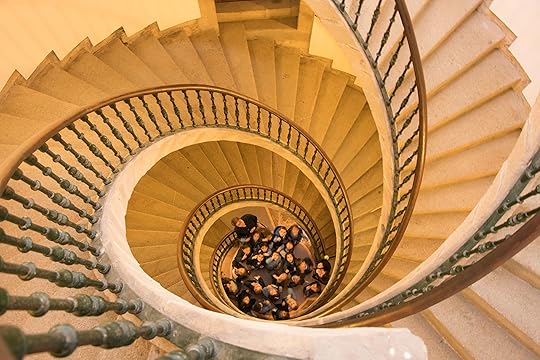
Triple-Spiral Stairs with School Group © Harold Davis
I really like Santiago de Compostela very much. Not only does it have a triple-spiral stair, it also has a wonderful old town, a university population, and a constant flow of colorful incoming Camino pilgrims.
When the Camino de Santiago first became a pilgrimage, it was thought of as a walk to the edge of the unknown. Remember, Columbus was still centuries in the future at that point, and the apparently endless Atlantic lies only a short distance beyond Santiago. So pilgrims came laboriously from all over the known world to get a taste of the unknown.
For me, walking to this city still has a bit of the edgy feeling of contemplating what comes after all that is known.

May 7, 2018
Compostela Haraldum Davis
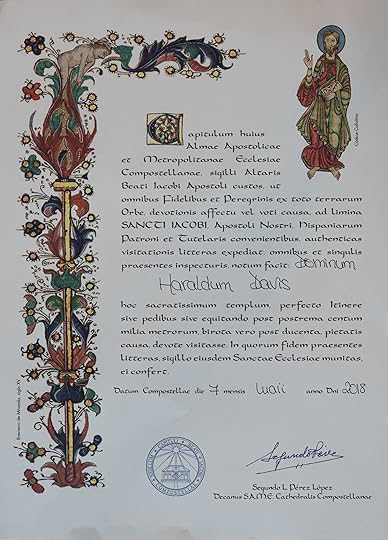
Compostela Haraldum Davis © Harold Davis
Today I trudged into Santiago de Compostela, having completed my Camino, tired and footsore, but happy. At the queue in the cloisters waiting for our certificates we all compared blisters to see who had the biggest (losing a toe nail seemed to outrank my painful blisters).
The line to show our Credencial with its stamps from along the Camino reminded me of a passport control line, with an electronic board and buzzer in the front to show which station one should go to to get the Crendencial checked. Sheer numbers help explain the queuing and the setup: right now 600-700 pilgrims a day are coming into Santiago de Compostela off the various Camino routes.
I had heard that in order to get the Compostela in Latin (as mine is, shown above) one had to do one’s Camino for religious or spiritual reasons (otherwise you get a somewhat smaller certificate in Spanish). One of the people I was chatting with on line told me he had a friend who liked to joke around, and last year when asked why he had walked a pilgrimage route said that he had walked his Camino to “lose weight”. He tried to take it back when he realized he would be denied his Compostela, to no avail.
So when I filled out the form that had three possibilities (Religious, Spiritual, and Cultural) I knew not to check Cultural. If you are curious, I went for Spiritual reasons, which is even mostly true (I think).
The image below shows my stamped Credencial and my Compostela in my rather incredible room at the rather incredible Hostal dos Reis Catolicos Parador. Since I am staying a few nights here, I am looking forward to photographing the four interior cloisters and other unique features of this place.
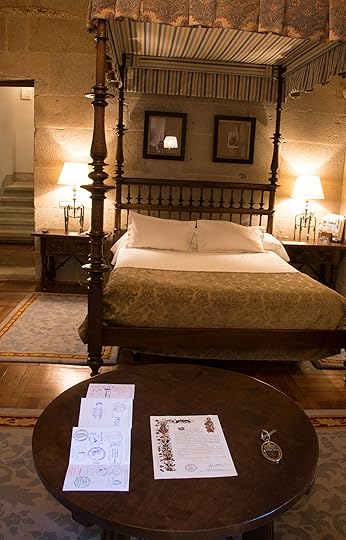
My room at the Hostal dos Reis Catolicos © Harold Davis

May 4, 2018
Camino Seen via Hotel Room Interiors
Phyllis says that for her my Camino is visually a succession of hotel room interiors. This is because of the nine-hour time-shift with California. When she is sleeping, I am walking, and when she is going about her day I am sleeping. Our hours are close to orthogonal.
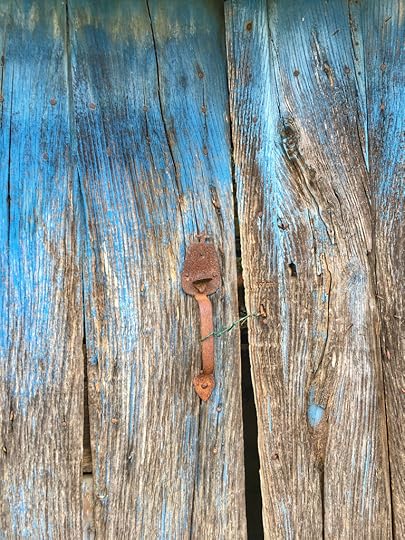
Old Wood Door with Blue Paint © Harold Davis
We FaceTime when I wake (her bedtime), I walk and she sleeps, and we usually touch base again after I’ve checked in, my late afternoon becoming her early morning. She sees my Camino essentially as different window treatments in the backgrounds of my screen: red curtains morph into lace, and then into green shutters, or a stone wall.
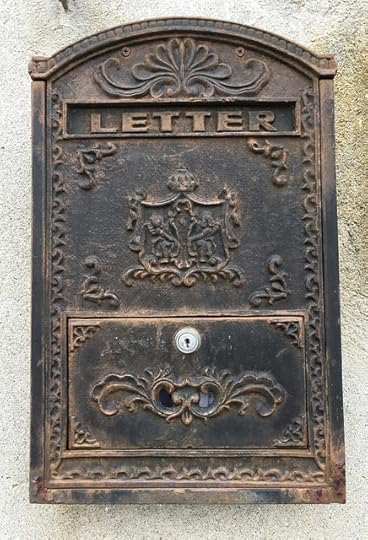
Letter Box © Harold Davis
By the way, these are hotels that cater to pilgrims. They are okay, some better than others, and all more than a little bit odd. So far, they’ve had the necessities: a bed and a shower and a “pilgrim’s dinner”.

Tree and Wine © Harold Davis

Walking the Camino for Wild Camels
Today on the Camino I met Rosa, a zookeeper from Denmark. Rosa has walked the Camino from the French border to raise awareness and donations for wild camels. Wild camels are the eighth most endangered mammalian species, with less than 1,000 individuals surviving in northwest China and Mongolia.
You can click here to learn more about the wild camel cause, and here to learn more about Rosa’s walk (and to donate).

May 3, 2018
Music in My Head
Yesterday I wrote about group singing along the Camino. It turns out that my biggest mistake in preparing for my Camino was musical.
By way of background, I like to listen to music when I am at home arranging flowers on the light box, or working in Photoshop. Often I will pick a particular genre, or performer. This way I have spent weeks listening to Brahms, and worked my way through Paul Simon (never again, many of Simon’s songs are ear worms), Bob Dylan (amazingly creative artist if you listen to his progress across the years), and Leonard Cohen (wonderfully moving, but a bit depressing).
The problem is that I had a jag listening to Broadway musicals before I left home. Specifically the original cast albums for The Sound of Music, The King and I, Fiddler on the Roof, and (most deplorably) My Fair Lady. More than once. In fact, many times.
These are not the tunes one wants running through one’s head as one walks solo along the Camino de Santiago!
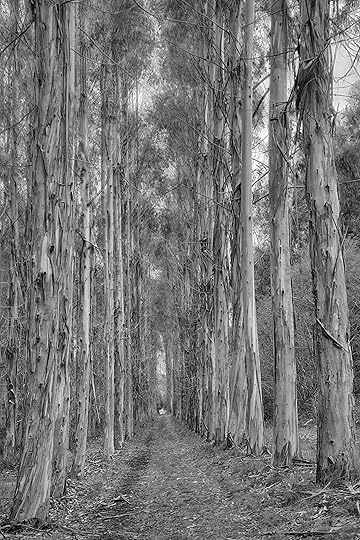
Straight and Narrow © Harold Davis
Sure, many of the melodies are catchy (part of the problem) and the lyrics seem sunny enough. Until the songs have run through one’s brains in tandem with the rhythm of one’s footsteps, over and over again and sunny begins to seem facile and fake.
Take My Fair Lady, one of the worst offenders. This misogynist version (“Why can’t a woman be more like a man?”) of George Bernard Shaw’s Pygmalion manages to trivialize the heinous and wasteful rigidity of the British caste system. It seems that all you need to do to land a toff in marriage is to get a little help with enunciation—even when the personal plumbing is a mismatch because the Rex Harrison character clearly has no use for cis-gendered females.
And, yes, it really does rain in Spain! In my recent experience, considerably.
I hate having these disingenuous and deceitful lyrics running through my head as I walk along. I really should have been listening to something more appropriate before heading off on my Camino, like Mozart’s Requiem, or the Missa Solemnis. Next time I will know better.
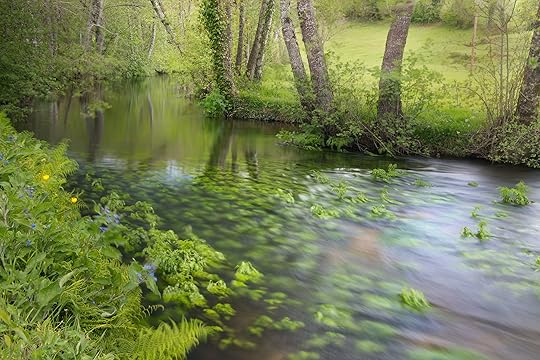
River Iso © Harold Davis
Notes: The Camino crosses the River Iso on an ancient stone bridge at the hamlet of O Iso. It’s traditional for pilgrims to bath their feet in the river. So I descended the stone stairway, removed my shoes and socks, and bathed my feet in the wonderfully cold river. Tradition or not, it felt so good on my tired feet!
Sitting facing the old bridge I rested for a while as my feet chilled. Then I turned sideways and looked upstream for the view you see in the photo above.



